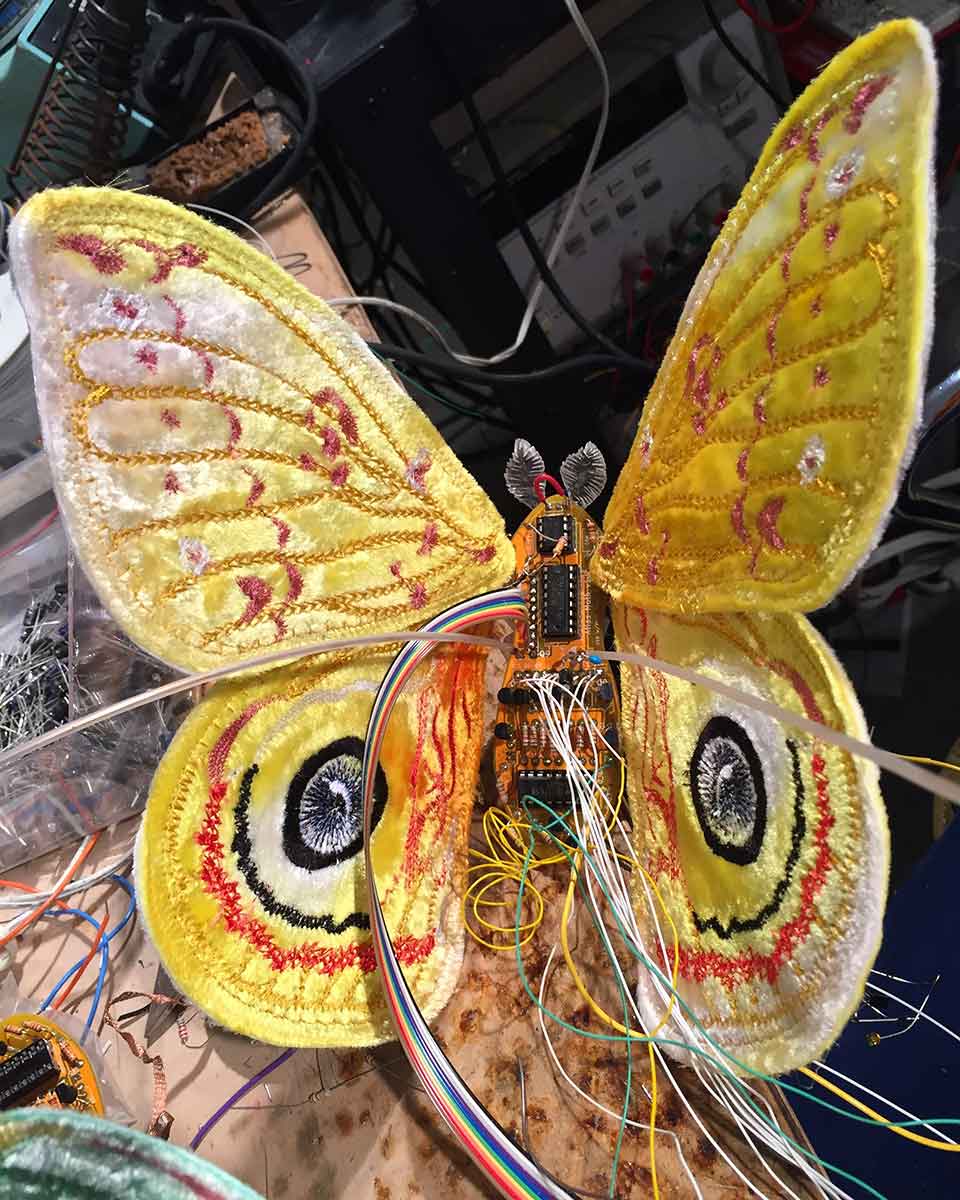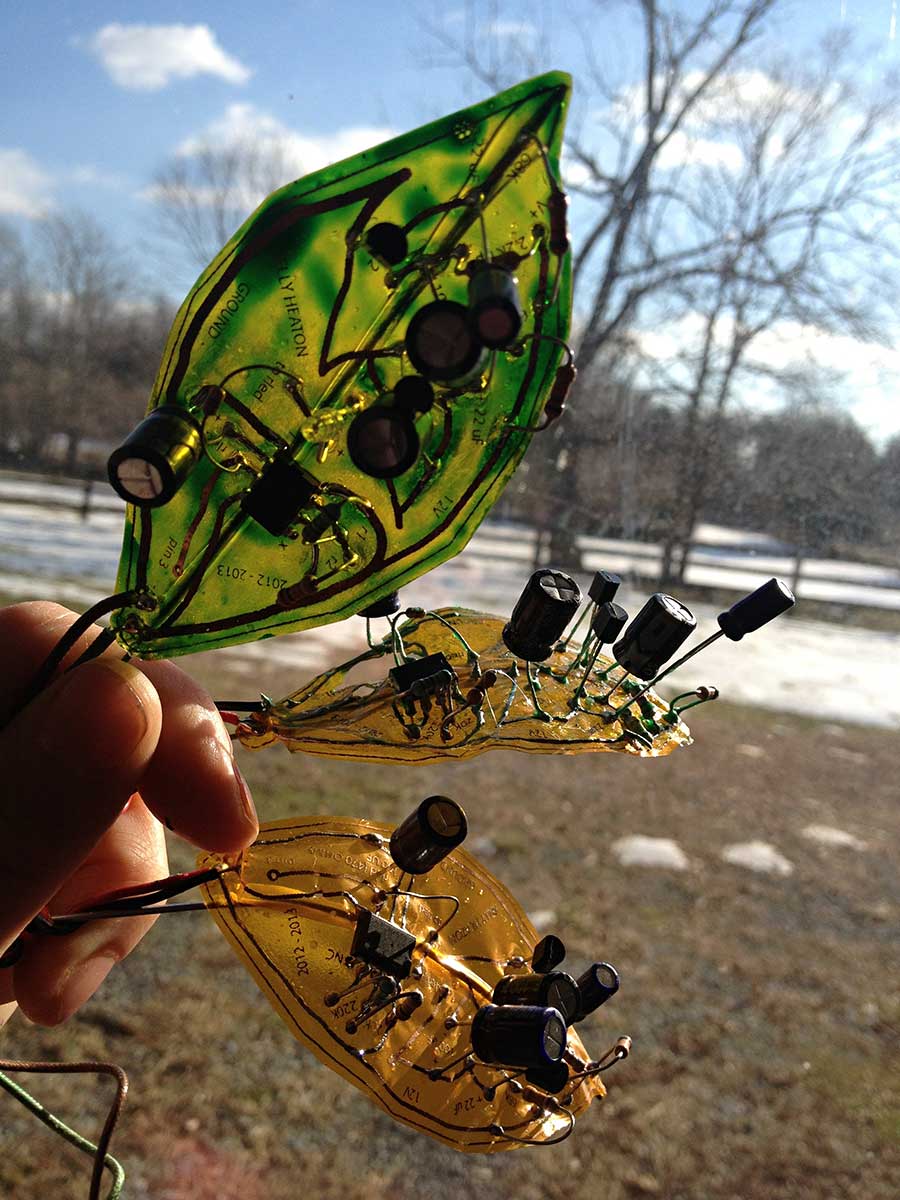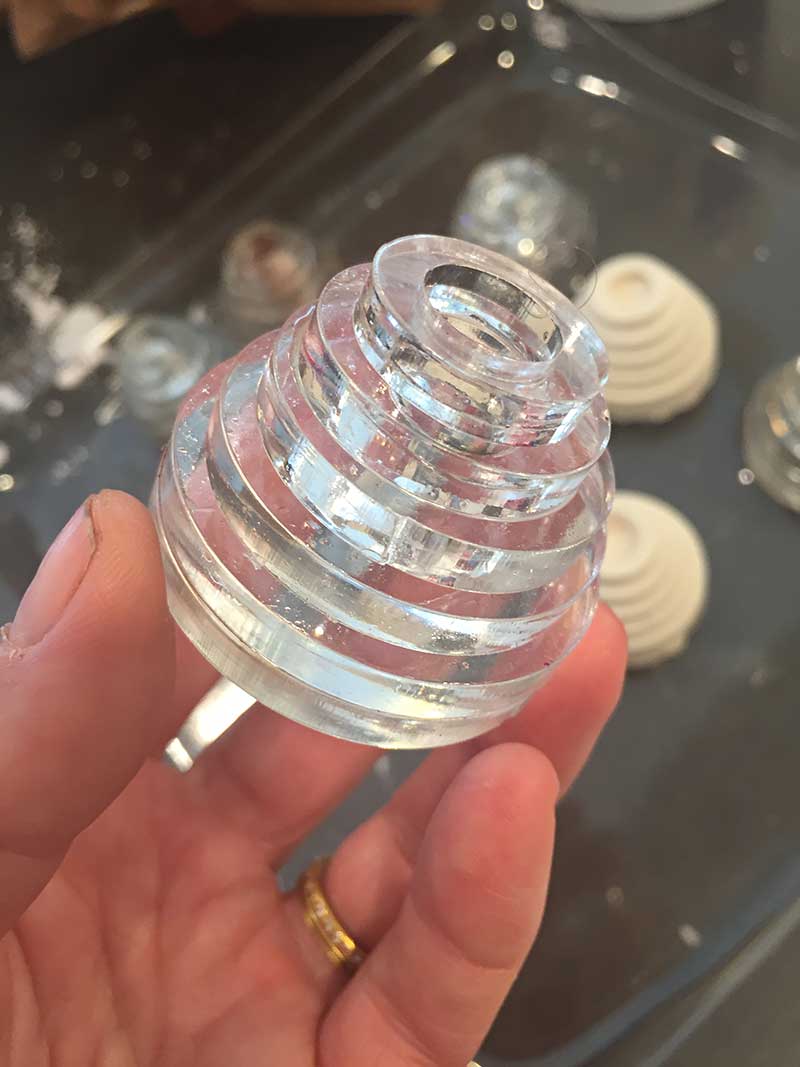For those of you who don’t recognize electronic components, this guide is for you ⚡️ My installation, “Circuit Garden,” is planted with oversized sculptures of common electronic parts used in nearly every circuit ever made. Hardware components are the media fundamentals of electrical engineering and electronic art — without which we would not have computers or software. They comprise the physical anatomy of machine intelligence. These are: capacitors (electrolytic and ceramic types), transistors, resistors, LEDs, wires, and ICs (integrated circuits, aka chips). Yes, there are other important types of hardware not included in Circuit Garden (or mentioned here), but I’ll sculpt those another time 😉
engineering
the return of magic /
I have spent the past five months working on a sculpture that required some serious engineering on my part, a task that I managed to accomplish by hyper-focusing and pushing myself through many days at my electronics bench. Meanwhile, my lack of energy to make art with my spiritual and physical self has been injurious. A new friend thankfully reminded me that I need these other facets of myself if I am to survive. Suddenly, I regained attention for the magical objects that I keep on display above my electronics workspace. These protectors and power objects became visible to me again after a blindness that I self-inflicted with my own mental intensity. It’s amazing how a shift in consciousness can instantly remove the wool from our eyes — the most dangerous form of blindness is not an optical condition, but a compromised state of mind.
I wish that hardcore stunts of engineering were possible (for me) without a serious bias for thinking (instead of feeling), but that’s just not the case… not yet. I need more practice in order to achieve a greater virtuosity and grace, but that’s the work of a lifetime I suppose. Anyway, now, as I approach the end of my latest intellectual challenge, I’m grateful that a restoration of balance is on my horizon.
Moth bus /
I've been making moth trails in the form of animated light. To learn more, please follow the links below.
https://hackaday.io/…/163201-electronic…/log/161522-moth-bus
Same signal, many sounds /
I've been migrating my circuits out of the breadboard and into soldered form. I'm also hooking up speakers so that my sound generating circuits are ready for installation in a sculpture of Virginia's nocturnal ecosystem. Because most of my circuits use a custom piezo electric speaker (built with my own amplifier board), I have to install each piezo element into a physical housing... and there's some interesting "play" here. One electronic signal can generate many different sounds depending upon the speaker's physical design. Here's a video of me testing various installations of a piezo element for an insect that makes a steady background noise.
It's cool to experiment with the interface between electrical signal and material properties. It's also critical to get it right, or else the piezo element will make a horrible rattling or screeching. Even a tiny drop of glue (to fix the piezo element in place) will alter the sound quality --usually the pitch-- and superglue can sound different from rubber cement or hot glue or tape. All of this is no news to a human musician, who knows that a note ill-played (even slightly) is a fail, and teensy subtleties often make the difference between average sound quality and genius.
It is interesting to wonder what makes animals of the same species sound different in nature: is it their electrical impulse or their physical form? (Is it their schematic, their CAD file, or their bill of materials?) Members of the same species inherit the same circuit design as well as physique. External physical factors, such as climate, have some degree of influence over material properties of the body --for example, a dehydrated cricket sounds differently than the same cricket wet with rain; a fat frog sings a different tune than the same frog skinny; and so on and so forth. We also know that "animal circuits" are sensitive to electromagnetic fields, and capacitive coupling undoubtedly affects individuals in close proximity. I suspect that physical factors play a greater role in the variability of an individual's song if but for no other reason because birds sound the same whether they are sitting on a tree branch or an electrical transformer (at least, I think they do). PS: Eventually I will tackle the challenge of bird song, but their vocal complexity requires more computation... which is why I have started with insects.
To end this log, I leave you with one more video clip of my "background noise" insect. Here it is with a plastic spool installed over the piezo (now painted green, black, and white). The soldered perfboard is embedded in a cardboard cutout that is painted to look like a forest creature sounds. Soon, this mixed media object will be joined with other embellished animal circuits to build a vignette of nocturnal musicians.
Modeling tree branches /
Using Blender to model and Pepakura to produce paper patterns for tree branches.
Piezo speaker housing /
Here's a prototype of a housing for a piezo speaker that I will actuate with analog electronic insect sounds. The shape of the housing and mechanical pressure on the piezo element will change the pitch as well as the volume. I made this housing by first laser cutting 1/4" acrylic and gluing the stacked rings to make a pyramidal-shaped buck — see images below. Note that there's a central hole all the way through the buck to aid the vacuum forming process. I’ve vacuum-formed .080” and .090" acrylic sheet over the buck (both work fine) and used a laser to cut the shapes out. My registration needs improvement, but you get the idea. The piezo element is mounted inside of the housing by a short length of plastic tube that I glued in place.
Below I show my process to cast the acrylic buck in plaster (using an alginate mold). I will use plaster, wood, or metal bucks in the future because acrylic deforms in the vacuum forming process. In either case, it is critical to use mold release.
Why am I doing this? Because when RadioShack went out of business, I could no longer buy the piezo speakers that I used for my insect sounds. I was forced to reverse engineer the part --which turned out to be a blessing because the sound of insects is heavily dependent upon the mechanics of speaker design (not just the electronics which drive the speaker). For a previous blog entry on this issue, link here or read about my project “Hacking Nature’s Musicians” on Hackaday.io
Anatomy of an obsolete moth /
I've spent the past several days heat-bending laser cut acrylic into the shape of moth trails (more on that to come)... and at some point, it occurred to me that I have to redesign all of my electronic animals to accommodate a master controller with a custom remote control. I am fatigued by serious engineering and wanting to make more emotional art, but that might not happen for a while longer. Here is an obsolete moth circuit to express my mood.



























